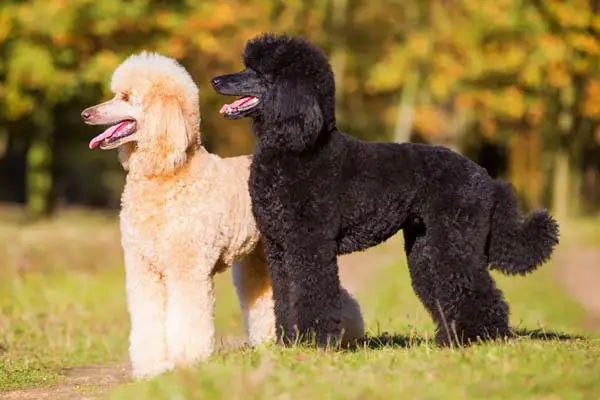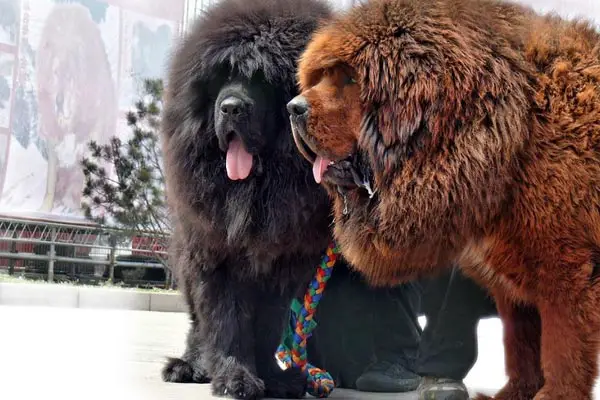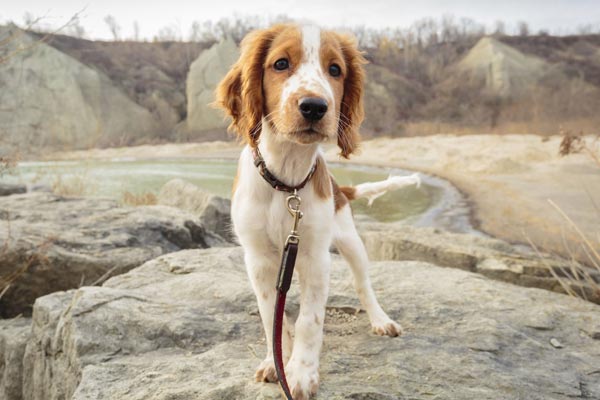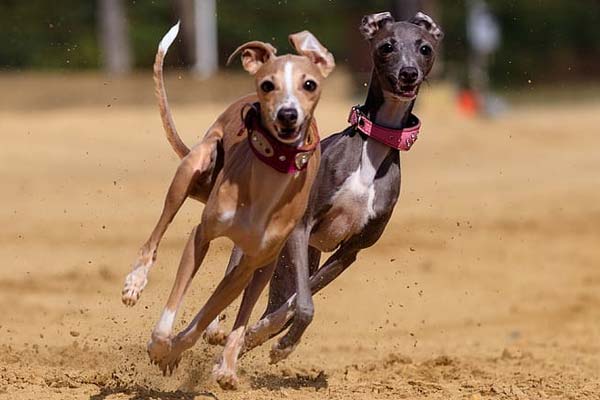How Much Does a Labrador Puppy Cost? Understanding the Expenses of Owning a Lab
Labrador Retrievers are super popular dog breeds around the globe. They’re friendly and loyal, making them excellent pets for families.
However, before bringing a Labrador puppy home, one must understand the costs of owning one. Getting a Labrador can be quite a big deal, starting with buying one and then keeping up with the ongoing expenses.
The cost of a Labrador puppy can vary depending on several factors. These include the puppy’s bloodline, coat color, and breeder reputation.
According to AnythingLabrador, Reputable breeders typically charge between $800 and $1,500 for a Labrador puppy, but prices range from $400 to $3,000. Researching and choosing a breeder carefully is vital to ensure the puppy is healthy and has been raised in a loving environment.
Understanding the costs involved in owning a Labrador puppy is crucial for anyone considering bringing one into their home. In addition to the initial purchase price, ongoing expenses such as food, veterinary care, and grooming must be considered.
Key Takeaways
- Depending on various factors, labrador puppies can cost between $400 and $3,000.
- Ongoing expenses like food, veterinary care, and grooming must be considered when considering the costs of owning a Labrador puppy.
- Choosing a reputable breeder ensures the puppy is healthy and raised in a loving environment.
What Affects Labrador Retriever Puppy Prices?
Labrador Retriever puppy prices can vary depending on several factors. Here are some of the critical factors that affect the cost of a Labrador Retriever puppy:
Breeder and Reputation
The reputation of the breeder can have a significant impact on the price of a Labrador Retriever puppy. A reputable breeder who performs health screenings and certifications on their breeding dogs and is actively involved in the breed community will charge more for their puppies than a backyard breeder or puppy mill. However, purchasing a puppy from a reputable breeder can help you get a healthy and well-socialized puppy.
Location and Demand
Location and demand can also impact the price of a Labrador Retriever puppy. In areas where the need for Labrador Retrievers is high, prices may be higher than in areas where the breed is less popular. Also, the prices can be higher in cities where life is usually more expensive.
Color and Pedigree
The color and pedigree of a Labrador Retriever can change how much a Labrador Retriever costs. For example, yellow Labrador Retrievers are often more expensive than black or chocolate Labradors.
Additionally, puppies with a strong pedigree or lineage, or those with registration papers from a reputable organization, may command a higher price.
Health Screenings and Certifications
Puppies from breeders who perform health screenings and certifications on their breeding dogs may be more expensive than those from breeders who do not. Health screenings can help identify potential health issues such as progressive retinal atrophy, hip dysplasia, and elbow dysplasia and help ensure the puppies are healthy.
Other Costs
In addition to the cost of the puppy itself, there are other costs to consider when bringing a Labrador Retriever puppy into your home. These costs can include:
- Health-related costs such as vaccinations, deworming, flea and tick prevention, and spaying or neutering
- Veterinary visits and medications
- Grooming supplies such as nail clippers, professional grooming, and shampoo
- Food and water bowls, collar, microchip, bed, crate, and other supplies
- Poop bags, dog walker, toys, treats, and other items for socialization and training
Overall, the cost of a Labrador Retriever puppy can vary depending on various factors. Researching and finding a reputable breeder who can provide you with a healthy, well-socialized puppy that fits your budget and lifestyle is vital.
How Much Will Your Labrador Retriever Puppy Cost?
Labrador Retrievers are one of the most popular dog breeds in the world. They are known for their friendly and loyal personalities, making them great family pets. However, it is crucial to consider the cost before bringing home a Labrador Retriever puppy.
Average Cost of a Labrador Puppy from a Reputable Breeder
A Labrador Retriever puppy will cost between $800 and $1,500 from a reputable breeder in the USA. The price may vary depending on the breeder’s location, the puppy’s bloodline, color, and age, among other factors.
Price Range for Puppies with Different Characteristics
Labrador puppies with different characteristics may have different price ranges. For example, a Labrador puppy with a pedigree and registration papers may cost more than a puppy without them. Similarly, a puppy with a desirable coat color like chocolate may cost more than a puppy with a less popular color like yellow.
Adopting a Labrador Puppy from a Rescue or Shelter
Adopting a Labrador puppy from a rescue or shelter can be more affordable. Generally, adopting a Labrador Retriever can cost $50-$350. Adopting a Lab puppy from a rescue or shelter can also be a great way to give a loving home to a needy dog.
Beware of Puppy Mills and Backyard Breeders
It is essential to be cautious when buying a Labrador puppy. Puppy mills and backyard breeders may offer puppies at a lower price but may need to provide proper care or health checks. This can result in health problems and high vet bills in the future.
The cost of a Labrador Retriever puppy can vary depending on several factors. Researching and finding a reputable breeder or adoption agency is vital to ensure the puppy is healthy and well-cared for.
Ongoing Expenses for Your Labrador Retriever
Once you bring your Labrador Retriever puppy home, you should be prepared for the ongoing expenses of owning a pet. These expenses include food and nutrition, health care and vaccinations, training and socialization, grooming and maintenance, toys and accessories, and other miscellaneous costs.
Food and Nutrition
Labrador Retrievers require a healthy and balanced diet to maintain their health and energy levels. You should expect to spend between $400 to $1,220 annually on food, depending on the brand and size of your pet.
Feeding your Labrador high-quality dog food rich in protein, vitamins, and minerals is recommended. Treats are a great way to reward your dog, but they should be given in moderation to prevent obesity.
Health Care and Vaccinations
Going to the vet often is super important to keep your Labrador healthy. You should expect to spend between $200 and $600 annually on vet visits, vaccinations, and medications.
It’s a good idea to spay or neuter your Labrador to avoid surprise puppies and lower the chance of some cancers. Additionally, flea and tick prevention is essential to prevent infestations and diseases.
Training and Socialization
Training and socialization are crucial for your Labrador’s mental and physical health. You should expect to spend between $100 and $200 annually on training classes and toys.
You should begin training your Labrador when they’re young to avoid bad habits and promote good behavior. Socializing your dog with other dogs and people is essential to prevent aggression and anxiety.
Grooming and Maintenance
Labrador Retrievers have a short and dense coat that sheds throughout the year. You should expect to spend between $130 to $680 annually on grooming supplies and professional grooming.
Brushing your dog at least once a week is recommended to prevent matting and shedding. It’s important to clip your dog’s nails, clean their ears, and brush their teeth to keep them clean and healthy.
Toys and Accessories
Toys and accessories are essential for your Labrador’s mental stimulation and entertainment. Plan to spend around $50 to $200 a year for toys, collars, microchips, beds, crates, supplies, poop bags, food and water bowls, and shampoo. Providing your dog with various toys is recommended to prevent boredom and destructive behavior.
A Labrador Retriever can cost about $1,000 to $3,000 a year, depending on how big and old your pet is and how well you care for them. Budgeting for these expenses before bringing your puppy home is recommended to ensure you can give your furry friend the best care possible.
How to Choose a Reputable Labrador Retriever Breeder
When looking for a Labrador Retriever puppy, it’s essential to find a reputable breeder who prioritizes the health and well-being of their dogs. Here are some tips on how to choose a reputable Labrador Retriever breeder:
Researching breeders
Begin by looking for breeders near you. Ask the American Kennel Club (AKC) or Labrador Retriever clubs for breeder lists. You can also search online, but watch out for breeders who only show their puppies there.
Asking for references and testimonials
A reputable breeder should provide you with references and testimonials from previous puppy buyers. Contact these references to get an idea of what it’s like to work with the breeder and their experience.
Visiting the breeder’s facilities
Visiting the breeder’s facilities in person is vital to see how the dogs are cared for. A reputable breeder should be willing to show you around and answer any questions you have. Take note of the facilities’ cleanliness and the dogs’ temperament.
Ensuring health certifications and screenings
A reputable breeder should provide health certifications and screenings for their dogs, such as hip and elbow evaluations and eye exams. Ask for these certifications and verify them with the appropriate organizations.
Breeder vs. backyard breeder
A reputable breeder breeds dogs to improve the breed and produce healthy, well-tempered puppies. On the other hand, a backyard breeder breeds dogs for profit without regard for the breed’s standards or the dogs’ health.
Pedigree and lineage
A reputable breeder should provide information about the puppy’s pedigree and lineage. This information can give you an idea of the puppy’s potential health and temperament.
Registration papers
A reputable breeder should provide registration papers for the puppy. This ensures the puppy is a purebred Labrador Retriever and can be registered with the AKC.
Puppy mills
Avoid buying a Lab puppy from a puppy mill, a large-scale breeding operation that prioritizes profit over the well-being of the dogs. Puppy mills often keep dogs in inhumane conditions and breed them without regard for genetic health or temperament.
Trust
It’s crucial to find a breeder you can trust. A good breeder should be open about how they breed and happy to answer your questions. Listen to your gut; don’t worry about leaving if something feels wrong.
Location and rescue
Think about adopting a Labrador Retriever from a rescue organization. They often have puppies and grown-up dogs you can adopt for less money than getting one from a breeder.
Additionally, consider the location of the breeder or rescue organization. If the breeder is far away, you may need to factor in travel costs when considering the overall cost of the puppy.
Conclusion
Owning a Labrador puppy can be a rewarding experience but comes with a price tag. As we discussed, a Labrador puppy’s price can be anywhere from $400 to $3,000. It depends on the breeder, family line, and fur color.
However, the initial cost is just the tip of the iceberg. The first-year expenses can add up to $2,990, and the average cost of owning a Labrador Retriever throughout its lifetime is $21,890.
Budgeting and planning for the expenses associated with owning a Labrador puppy is crucial. This includes the initial cost and ongoing expenses such as food, grooming, veterinary care, and training. By doing so, prospective owners can ensure that they can provide the best care for their furry friend without breaking the bank.
In conclusion, owning a Labrador puppy can bring immense joy and companionship. However, it also comes with responsibilities and financial obligations.
Prospective owners should consider the costs of owning a Labrador puppy and make an informed decision. With proper planning and budgeting, owning a Labrador puppy can be a wonderful experience for both the owner and the dog.






